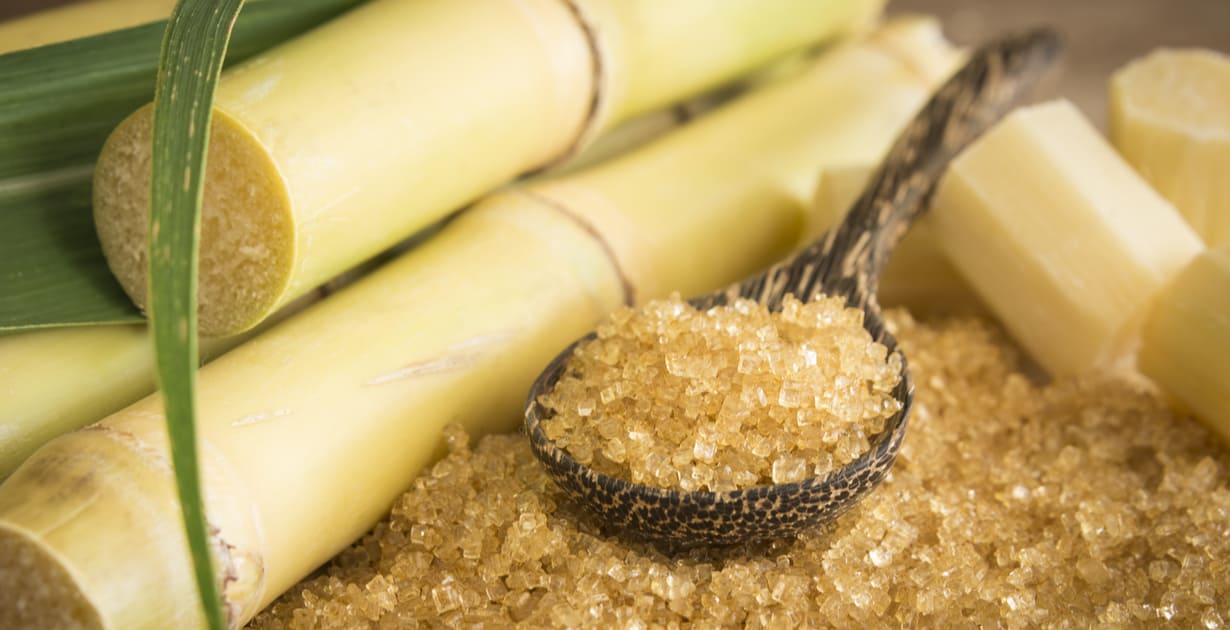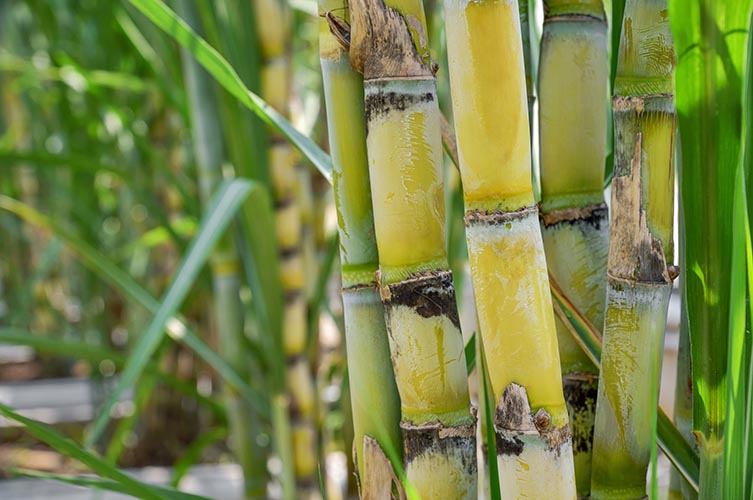Introducing the Importance of Sugar Canes: What Are Sugar Canes Made Use Of For in the Walking Cane Sugar Industry?
Sugar canes act as the cornerstone of the cane sugar industry, mostly providing the raw material needed for sugar manufacturing. Their capability to convert sunshine right into sucrose via photosynthesis is critical. Beyond their sweetening residential properties, sugar canes discover energy in different cooking applications and emerging sectors. The complete extent of their impact expands beyond the kitchen area. This discussion will explore the multifaceted duties of sugar canes in both market and economic situation.
The Function of Sugar Canes in Sugar Production
Sugar walking sticks serve as the fundamental basic material in the walking stick sugar sector, playing an important duty in the manufacturing process. These tall, seasonal grasses flourish in tropical and subtropical climates, where they take in sunlight and nutrients to produce sucrose. The harvesting of sugar canes usually happens when the plants get to maturation, optimizing their sugar content.Once harvested, the walking canes undergo crushing to draw out the juice, which has dissolved sugars. This juice is then clarified and concentrated via evaporation, changing it into a syrup. Subsequently, crystallization takes place, permitting the splitting up of sugar crystals from the remaining syrup.The extracted sugar undertakes more refining to accomplish the wanted pureness and high quality - What Are Sugar Canes Used For. Subsequently, the whole process highlights the crucial contribution of sugar walking canes to sugar manufacturing, highlighting their relevance as both a raw material and a driver in the manufacturing of walking cane sugar

Diverse Applications in Food and Drink Market
In the food and drink industry, sugar walking stick offers multiple vital features. It acts not only as a main sweetener in numerous items yet additionally as a flavoring agent that enhances preference accounts. Furthermore, its components play a significant role in fermentation and distillation procedures, adding to the manufacturing of liquors.
Sugar in Products

The adaptability of walking cane sugar as a sweetener makes it a staple in a wide range of food and beverage products. Widely utilized in baked goods, it boosts the taste and structure of cakes, cookies, and breads by giving wetness and promoting browning throughout cooking. In beverages, cane sugar is a preferred option for sweetening juices, teas, and soft drinks, permitting a well balanced flavor profile. In addition, it works as an essential active ingredient in dressings, sauces, and sauces, contributing to a harmonious blend of tastes. Walking cane sugar's ability to dissolve rapidly and its regular sweet taste account better strengthen its function as a favored sweetener - What Are Sugar Canes Used For. Overall, its diverse applications underscore the important duty of cane sugar in the culinary landscape
Seasoning Representative Use
Making use of walking stick sugar as a flavor representative prolongs past its function as a plain sugar, enriching a range of culinary productions. In the food and drink industry, it enhances taste accounts by balancing level of acidity and resentment, making it a crucial element in sauces, marinates, and dressings. In addition, walking stick sugar adds to the general mouthfeel, providing a pleasant structure in baked items and confections. Its caramelization throughout food preparation includes deepness to both savory and pleasant recipes, while also functioning as a chemical in jellies and jams. In addition, in drinks, cane sugar is utilized to magnify tastes in alcoholic drinks and soft drinks, making certain an extra enjoyable alcohol consumption experience. This flexibility highlights its value in varied cooking applications.
Fermentation and Purification
Cane sugar plays a significant function in fermentation and distillation processes, which are crucial in producing a selection of alcohols and foodstuff. Throughout fermentation, yeast converts sugars into alcohol and carbon dioxide, an essential action in crafting beverages like rum and vodka. Purification further purifies these alcoholic blends, focusing flavors and boosting alcohol web content. Beyond beverages, walking stick sugar is additionally integral in producing vinegar and particular food additives via fermentation. The versatility of walking cane sugar improves the taste profiles and top quality of these products, making it essential in the food and drink market. Its contribution not just sustains standard techniques yet also fosters development in crafting brand-new tastes and experiences for customers.
Sugar Canes in Biofuel Manufacturing
As interest in sustainable power sources expands, sugar walking sticks are progressively acknowledged for their possibility in biofuel manufacturing. The biomass originated from sugar walking canes can be changed right into ethanol, a lasting gas choice that decreases greenhouse gas discharges compared to fossil gas. This process commonly entails fermenting the sugar removed from the walking stick, which is then distilled to produce high-purity ethanol ideal for use in vehicles.Additionally, sugar walking stick bagasse, the coarse residue left after juice extraction, can be used as a feedstock for bioenergy. It can be shed to produce heavy steam and power, contributing to energy self-sufficiency in sugar mills. Countries such as Brazil have efficiently integrated sugar walking cane biofuel into their power policies, bring about decreased reliance on imported gas - What Are Sugar Canes Used For. Generally, sugar walking canes stand for an appealing method for biofuel production, lining up agricultural practices with ecological sustainability goals
Industrial Uses of Sugar Canes
While typically recognized primarily for sugar manufacturing, sugar walking canes also have diverse industrial applications that prolong well past the food field. The fibrous by-products of sugar walking stick, called bagasse, function as a useful source in different sectors. Bagasse is typically used look at here as a biofuel, generating energy in sugar mills and various other centers. In addition, it can be processed right into paper, cardboard, and biodegradable materials, promoting sustainable practices.In addition, sugar walking canes add to the manufacturing of molasses, a by-product used in the fermentation process for generating alcohol and yeast. This convenience makes sugar walking canes important to the beverage and pharmaceutical markets. In addition, sugar walking cane essences are employed in the cosmetics market, providing natural ingredients for skin care and beauty items. Overall, the commercial uses of sugar walking sticks highlight their significance beyond sugar, showcasing their duty in promoting sustainability and supporting different fields.
Economic Impact of Sugar Walking Cane Cultivation
The economic effect of sugar cane cultivation is substantial, mostly with job development and export revenue generation. This sector not just offers employment possibility in backwoods however also adds substantially to nationwide economic climates using exports. Understanding these facets highlights the essential function sugar walking cane plays in both international and local markets.
Work Development Opportunities
Although typically overlooked, the sugar walking cane sector plays a vital role in job development, significantly impacting regional economic situations. The cultivation, harvesting, and processing of sugar walking stick produce various work possibilities, from area workers to factory team. In several areas, these work provide resources for thousands of family members, contributing to neighborhood stability and development. In addition, secondary sectors such as transportation, tools manufacturing, and retail benefit from the sugar walking stick field, further increasing work alternatives. Seasonal work during planting and harvest times additionally supports short-lived settings, permitting employees to gain earnings in or else lean periods. Generally, the sugar walking stick sector serves as an essential economic engine, promoting task development and improving the lifestyle for many individuals and communities.
Export Revenue Generation

Lasting Practices in Sugar Walking Stick Farming
While typical sugar walking cane farming practices have often caused environmental deterioration, a growing variety of farmers are taking on lasting methods that focus on environmental balance. These techniques consist of crop turning, which improves soil fertility and minimizes insect outbreaks, and making use of organic plant foods to minimize chemical drainage. Additionally, some farmers are implementing integrated pest administration techniques, which concentrate on utilizing natural killers and biopesticides rather than hazardous chemicals.Water preservation strategies, such as drip watering, are likewise obtaining grip, enabling reliable water usage while keeping crop health. In addition, several farmers are buying renewable resource resources, such as biomass from sugar cane waste, to power operations and decrease their carbon impact. These sustainable practices not just secure ecosystems however additionally enhance the long-term stability of sugar cane farming, ensuring that it can proceed to fulfill international sugar needs while lessening environmental influence.
Often Asked Concerns
Just How Are Sugar Canes Harvested and Processed?
Sugar canes are harvested making use of mechanical cutters or manual techniques, then transferred to factories. There, they undergo washing, crushing, and removal processes to get juice, which is after that clarified, evaporated, and taken shape into sugar.
What Is the Nutritional Value of Sugar Walking Cane?
The dietary value of sugar walking cane includes carbohydrates, mainly in the kind of sucrose, together with trace quantities of nutrients like calcium and potassium. Nonetheless, it is reduced in healthy protein and fat content in general.
Can Sugar Walking Cane Be Expanded in Non-Tropical Areas?
Sugar cane can be grown in non-tropical areas, however it calls for details problems such as appropriate warmth, moisture, and suitable dirt. Adjustment and growing methods are crucial for effective growth outside traditional tropical climates.

What Illness and pests Impact Sugar Cane Crops?
Insects and diseases noticeably affect sugar walking stick crops. Usual threats consist of the sugarcane borer, red pop over to these guys rot, and mosaic virus, which can decrease return and quality, demanding efficient management methods to protect these essential farming sources.
Exactly How Does Sugar Walking Stick Farming Influence Resident Communities?
Sugar walking cane farming significantly effects neighborhood areas by giving employment possibility, advertising economic development, and sustaining regional organizations. It can also lead to social difficulties and ecological problems, affecting neighborhood health and sustainability. Sugar walking sticks offer as the foundation of the cane sugar sector, largely supplying the raw material required for sugar manufacturing. Sugar walking sticks serve as the foundational raw material in the walking stick sugar sector, playing an important role in the production process. The harvesting of sugar walking sticks generally happens when the plants reach maturity, maximizing their sugar content.Once gathered, the walking canes undertake squashing to remove the juice, which has dissolved sugars. While frequently identified largely for sugar production, sugar walking canes likewise have varied industrial applications that extend well beyond the food industry. As news worldwide demand for sugar continues to increase, countries abundant in sugar walking stick sources capitalize on this opportunity, exporting raw sugar and improved items to worldwide markets.
Comments on “What Are Sugar Canes Used For in Restaurants and Beverage Startups”